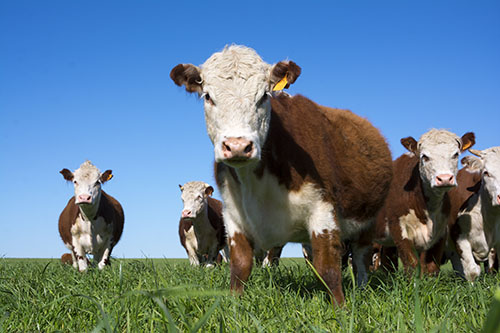Using CattleMaster Gold by Zoetis
Aug 30, 2021

Don’t let infectious diseases weaken your cattle’s reproductive efficiency. Infectious viral reproductive diseases can result in abortions, embryonic death, stillbirths, weak calves, and reduced pregnancy rates in beef cattle. These can add up to significant economic losses. Bacterial diseases caused by Leptospira spp. and Campylobacter fetus (Vibrio) can dramatically reduce a herd’s calving rate due to pregnancy loss and reproductive inefficiency.
To help guard cattle from the most common reproductive viral pathogens, try CATTLEMASTER GOLD FP® 5. This vaccine combines Inactivated BVD virus Types 1 and 2 that helps provide Fetal Protection against BVD persistent infections and has demonstrated safe and proprietary temperature-sensitive IBR (tsIBR) virus to help provide Fetal Protection against IBR abortions.
In addition, CATTLEMASTER GOLD FP® 5 can be administered to cows and heifers with unknown vaccination histories.
Choose a vaccine that helps provide an unmatched combination of safety and Fetal Protection. CATTLEMASTER GOLD® FP 5 is the only inactivated BVD vaccine to offer Fetal Protection against IBR abortion and BVD Types 1 and 2 persistent infections, something ViraShield® and Triangle® do not provide. It not only gives you peace of mind, but also pays off with healthier, profitable calves on sale day.
When used according to label directions, Zoetis CATTLEMASTER GOLD® FP line of vaccines are backed with a Fetal Protection Guarantee:
• 100 percent of calves are born free from BVD persistent infections
• Cows and fetuses are protected against IBR abortion
Need more information on cattle vaccines for infectious viral reproductive diseases? Contact your local Co-op livestock representative today!
To help guard cattle from the most common reproductive viral pathogens, try CATTLEMASTER GOLD FP® 5. This vaccine combines Inactivated BVD virus Types 1 and 2 that helps provide Fetal Protection against BVD persistent infections and has demonstrated safe and proprietary temperature-sensitive IBR (tsIBR) virus to help provide Fetal Protection against IBR abortions.
In addition, CATTLEMASTER GOLD FP® 5 can be administered to cows and heifers with unknown vaccination histories.
Choose a vaccine that helps provide an unmatched combination of safety and Fetal Protection. CATTLEMASTER GOLD® FP 5 is the only inactivated BVD vaccine to offer Fetal Protection against IBR abortion and BVD Types 1 and 2 persistent infections, something ViraShield® and Triangle® do not provide. It not only gives you peace of mind, but also pays off with healthier, profitable calves on sale day.
When used according to label directions, Zoetis CATTLEMASTER GOLD® FP line of vaccines are backed with a Fetal Protection Guarantee:
• 100 percent of calves are born free from BVD persistent infections
• Cows and fetuses are protected against IBR abortion
Need more information on cattle vaccines for infectious viral reproductive diseases? Contact your local Co-op livestock representative today!